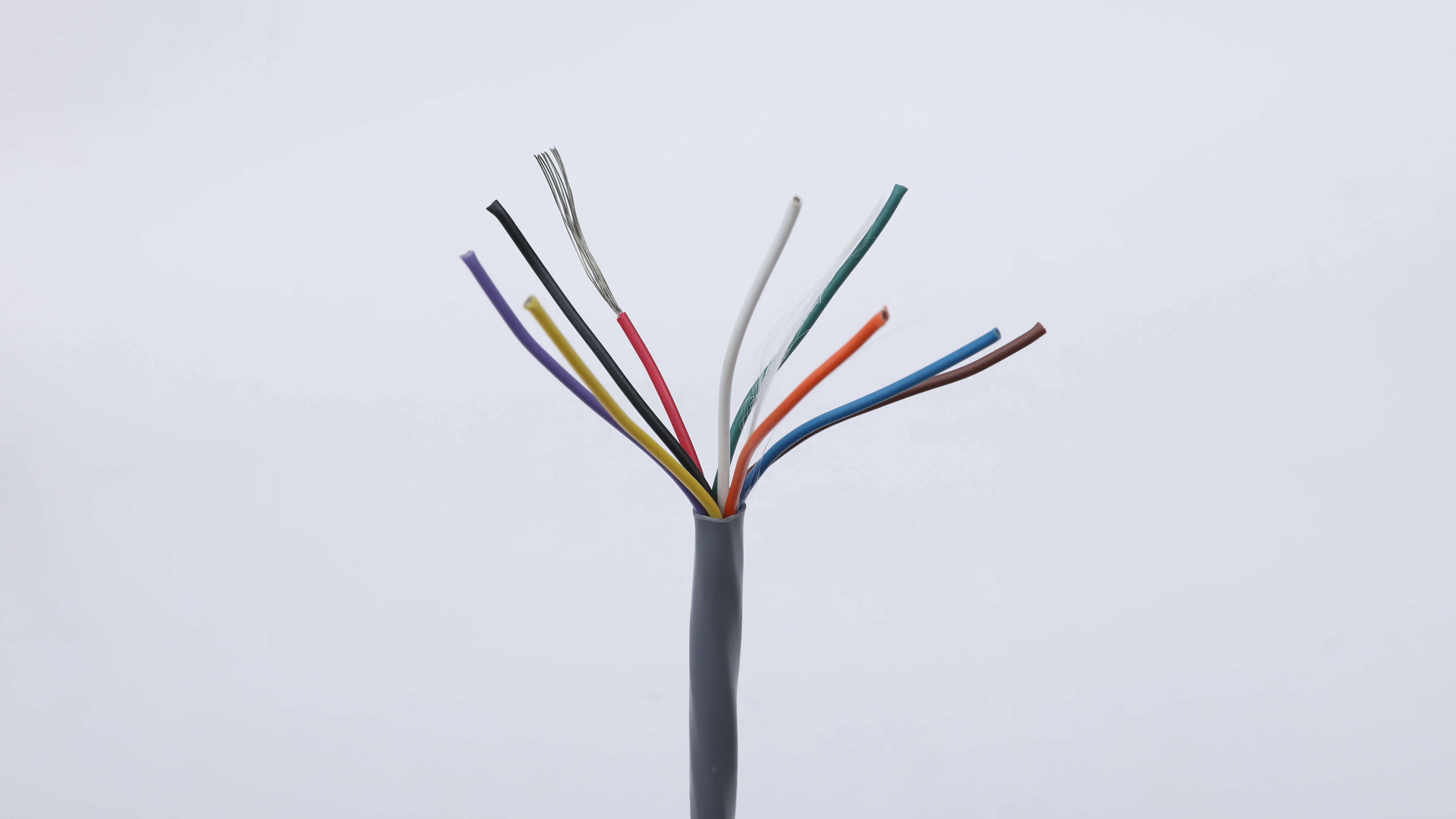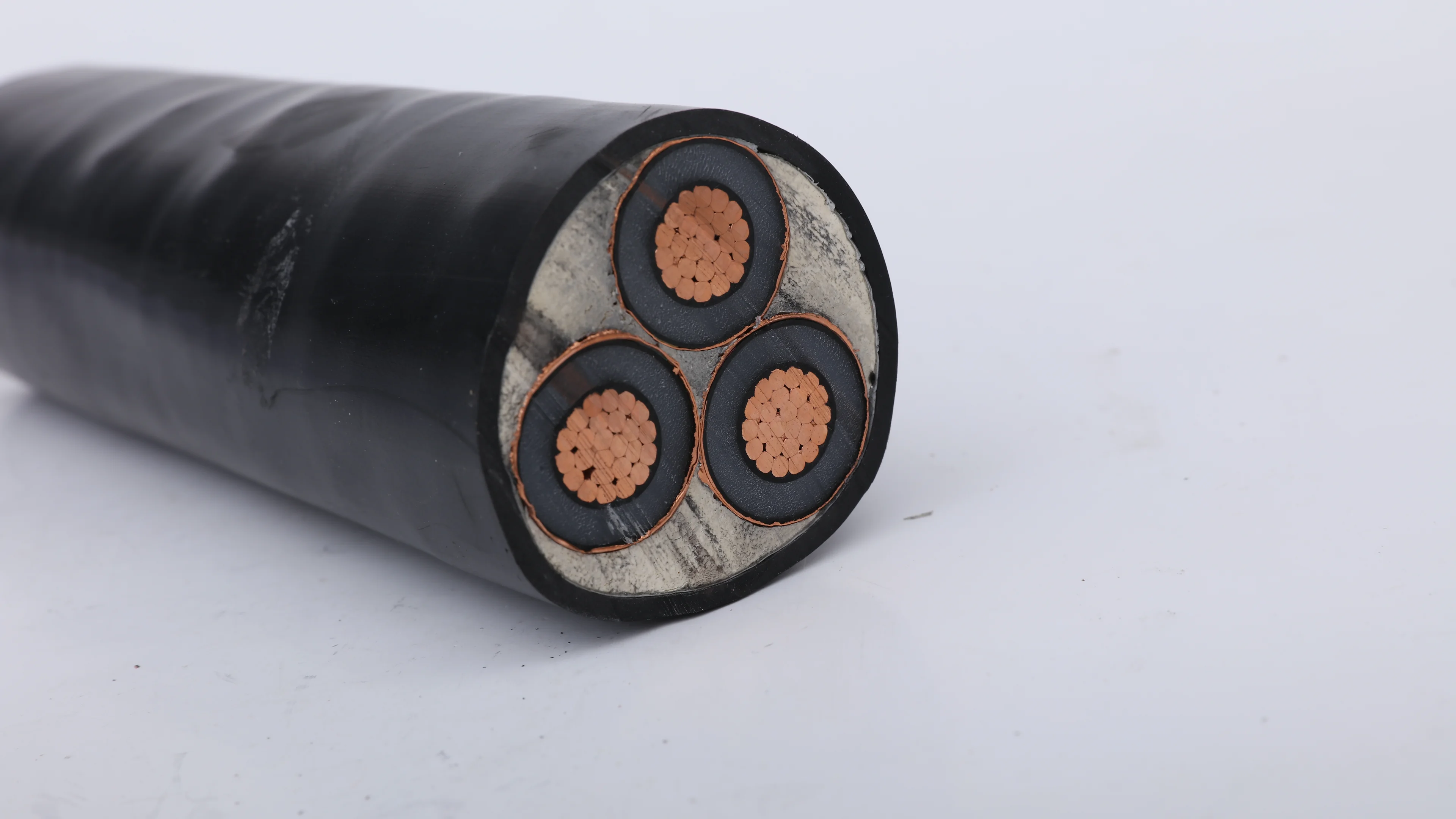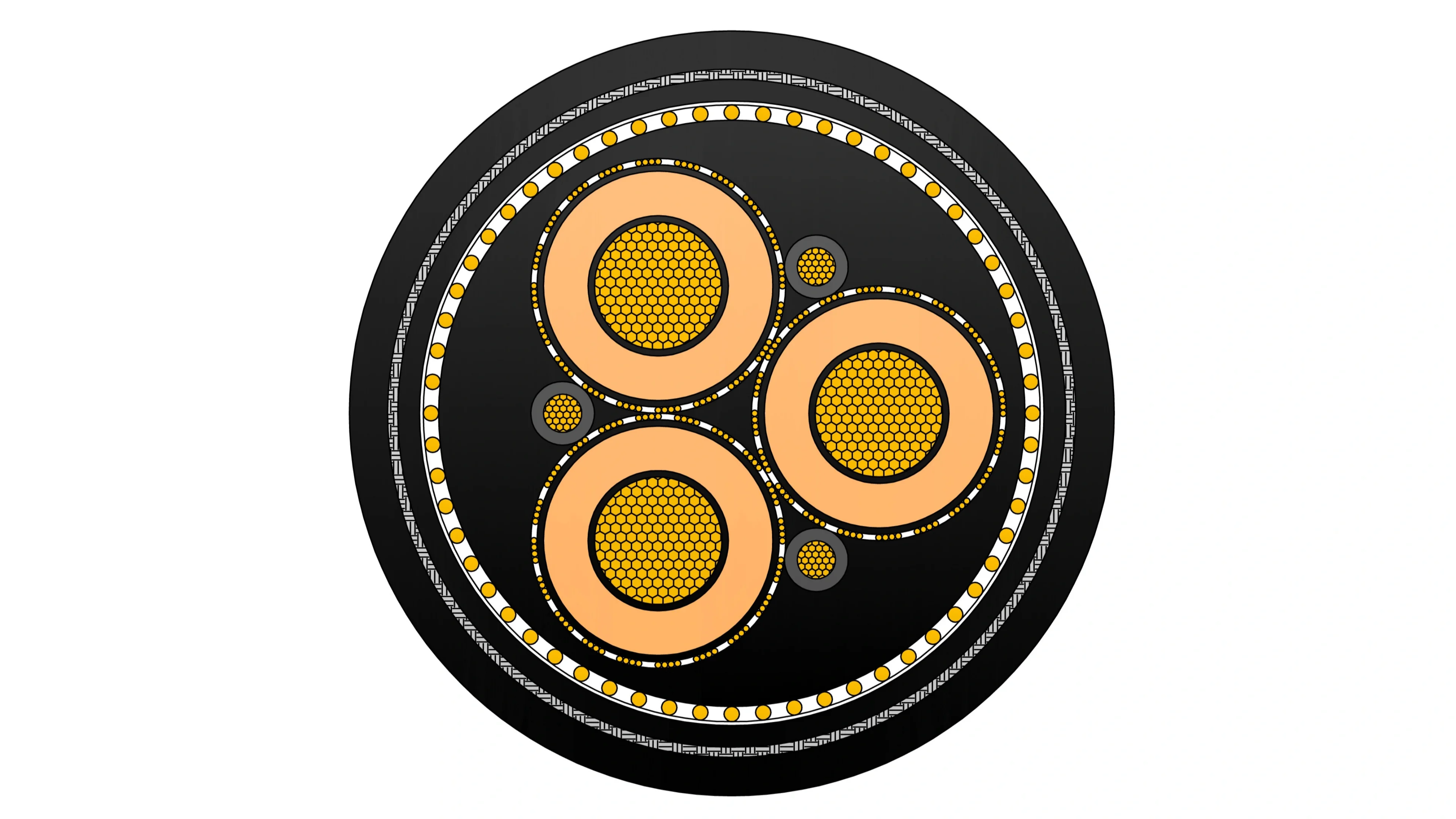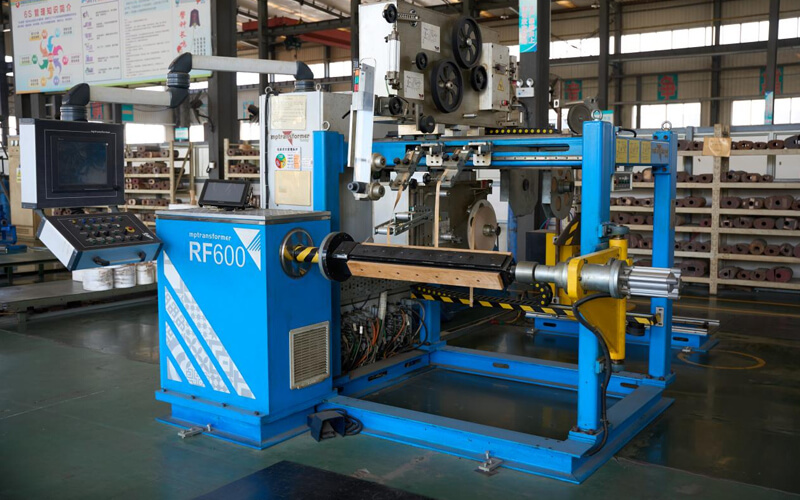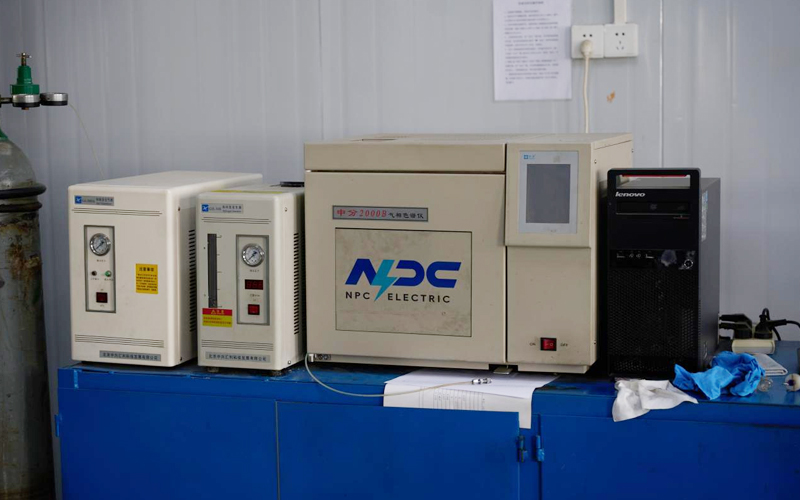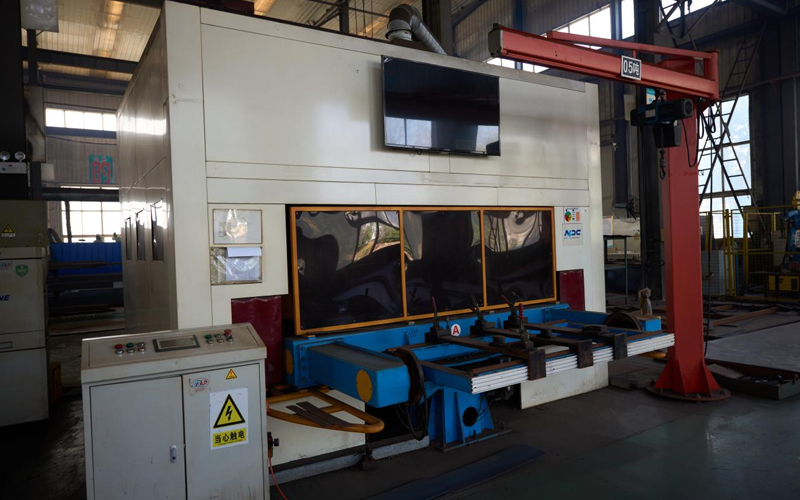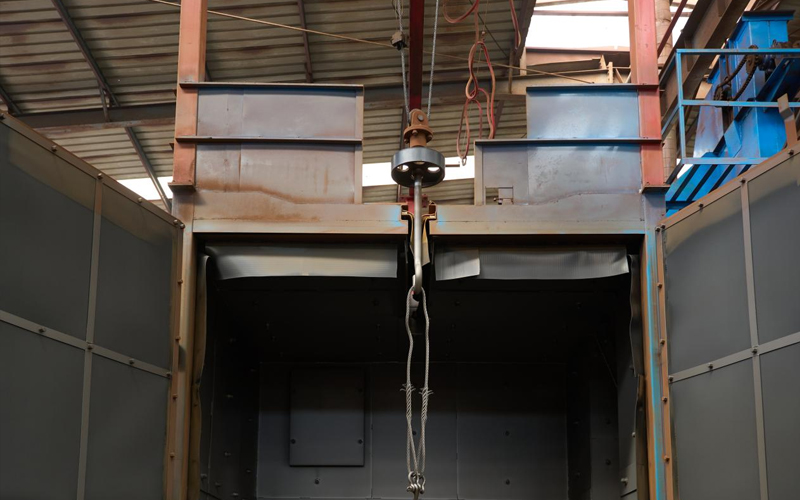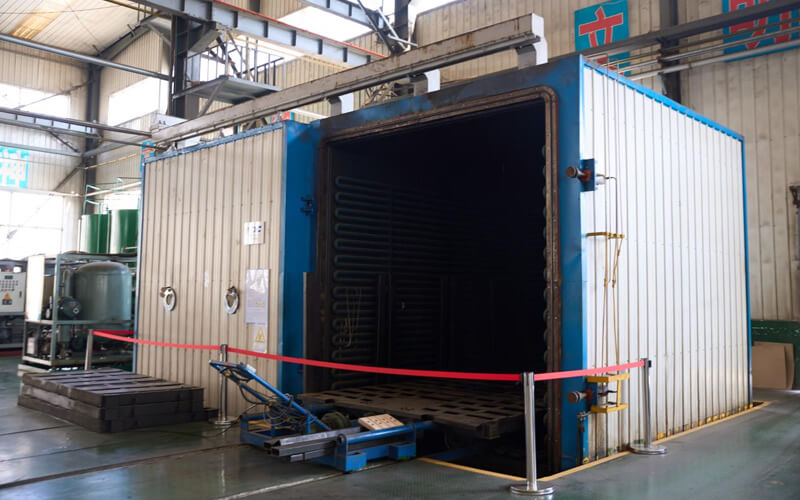Wires and Cables
Mining Cable

(N)TSCGEWOU 3.6/6kV, 6/10kV, 8.7/15kV and 12/20kV ATB Cable
The (N)TSCGEWOU 3.6/6kV, 6/10kV, 8.7/15kV, and 12/20kV ATB Cable is a medium voltage flexible power cable designed in compliance with VDE 0250 standards. It features Class 5 tinned copper conductors, EPR rubber insulation, semi-conductive layers, halogen-free flame-retardant rubber sheath, and an earth detection conductor. The ATB construction ensures superior mechanical strength, oil resistance, abrasion resistance, and flame retardancy, making it ideal for open-pit mining, tunneling, and other heavy-duty mobile equipment applications under extreme mechanical stress.
(N)TSCGEWOU 3.6/6kV, 6/10kV, 8.7/15kV and 12/20kV FO Cable
The (N)TSCGEWOU 3.6/6kV, 6/10kV, 8.7/15kV, and 12/20kV FO Cable is a medium voltage flexible power cable with integrated fiber optics designed in accordance with VDE 0250 standards. It features Class 5 tinned copper conductors, EPR rubber insulation, semi-conductive layers, copper braid shielding, and a halogen-free, flame-retardant rubber sheath. The built-in multimode or single-mode optical fibers enable simultaneous power and data transmission, making it ideal for reel systems, mining equipment, and other heavy-duty mobile applications requiring both electrical power and communication capability.
(N)TSCGEWOU 3.6/6kV, 6/10kV, 8.7/15kV and 12/20kV Submersible Cable
The (N)TSCGEWOU 3.6/6kV, 6/10kV, 8.7/15kV, and 12/20kV Submersible Cable is a medium voltage flexible power cable designed for long-term underwater use in accordance with VDE 0250 standards. It features Class 5 tinned copper conductors, EPR rubber insulation, semi-conductive layers, and a copper braid earth conductor, with EPR and CM waterproof rubber sheaths for excellent resistance to water, salt, abrasion, oil, and mechanical stress. Suitable for pumps, dredgers, floating docks, and heavy-duty mining equipment, this cable ensures reliable performance in wet and harsh industrial environments.
(N)TSCGEWOU 3.6/6kV, 6/10kV, 8.7/15kV and 12/20kV ZH Cable
The (N)TSCGEWOU 3.6/6kV, 6/10kV, 8.7/15kV, and 12/20kV ZH Cable is a halogen-free flexible medium voltage power cable designed in accordance with VDE 0250 standards for heavy-duty applications. It features Class 5 tinned copper conductors, EPR insulation, semi-conductive layers, and a copper braided earth conductor, with an inner and outer halogen-free polyurethane sheath that delivers excellent flame retardancy, low smoke emission, and high mechanical durability. Ideal for draglines, shovels, dredges, and drills in opencast mining or other extreme environments, this cable is suitable for both indoor and outdoor use where fire safety and robust performance are critical.
NTSCGEWOU 3.6/6kV, 6/10kV, 8.7/15kV, 12/20kV Cable
The NTSCGEWOU 3.6/6kV, 6/10kV, 8.7/15kV, and 12/20kV Cable is a halogen-free, flexible medium-voltage rubber cable designed in compliance with VDE 0250 standards for demanding industrial environments. It features Class 5 tinned copper conductors, EPR insulation, semi-conductive layers, and a copper braided screen, ensuring excellent flame retardancy, low smoke emission, mechanical strength, and abrasion resistance. Ideal for fixed power distribution in mining operations and material handling systems, this cable performs reliably in indoor and outdoor installations, even under extreme mechanical stress.
FG7H1OAR - 3.6/6kV, 6/10kV, 8.7/15kV and 12/20kV Cable
The FG7H1OAR 3.6/6kV, 6/10kV, 8.7/15kV and 12/20kV Cable is a halogen-free, medium-voltage flexible power cable built to CEI 20-86 and IEC 60502-2 standards, designed for high safety and mechanical protection in demanding industrial environments. It features Class 5 tinned copper conductors, HEPR insulation, semi-conductive layers, and aluminium wire armour, ensuring excellent flame retardancy, impact resistance, and long service life. Ideal for fixed installations in tunnelling, underground mining, and heavy industry, it delivers reliable performance both indoors and outdoors under harsh operating conditions.
Variable Frequency Drive (VFD) EMC 2YSL(st)CY Cable
The Variable Frequency Drive (VFD) EMC 2YSL(st)CY Cable is a flexible, low-voltage power and control cable designed for use with frequency-controlled drives. Built to DIN VDE 0250 standards, it features low capacitance, enhanced EMC shielding with aluminium-foil and tinned copper braid, and PVC outer sheath for durability. It provides excellent electromagnetic compatibility, oil and grease resistance, and reliable performance under medium mechanical stress. Ideal for connecting motors to inverters, this cable supports fixed and temporary installations in both indoor and outdoor environments (excluding direct burial).
YSLTOE-J 300/500V Cable
The YSLTOE-J 300/500V Cable is a flexible low-voltage control cable featuring tinned copper conductors and a halogen-free, oil-resistant PUR outer sheath. It is engineered for gravity-feed collector baskets in modern high-speed container cranes, ensuring reliable performance under moderate mechanical stress and in oily industrial environments. Manufactured to DIN VDE 0281 and related standards, it offers excellent tensile strength, abrasion resistance, and flexibility. For proper installation, the cable must be mounted torsion-free in a counter-clockwise direction, with a basket diameter exceeding 30× the cable’s outer diameter to prevent damage.
(N)TSKCGEWOU 3.6/6kV, 6/10kV, 8.7/15kV and 12/20kV Cable
The (N)TSKCGEWOU Cable is a flexible medium-voltage reeling cable designed for extreme mechanical stress in mining and industrial applications. It features Class 5 tinned copper conductors, EPR insulation, and a halogen-free rubber sheath that offers oil resistance, flame retardancy, and high tensile strength. This cable supports ground detection and can incorporate fibre optic elements (50/125, 62.5/125, or 9/125) for data transmission. Engineered for torsional forces, multidirectional deflection, and high-speed reeling up to 240 m/min, it meets VDE 0250 and IEC standards for durability in both opencast and underground mining.In-Depth Analysis
Comparative Analysis of Efficiency and Loss
Compared to the industry average, NPC control & instrument cable exhibit lower losses and higher efficiency across the entire load range.
Load Efficiency Comparison(%)
No-load Loss Comparison(W)
High Conductivity Design
High-purity oxygen-free copper or high-quality aluminum conductors are used with smooth surface and low resistance to ensure efficient power transmission and reduce energy loss.
Insulation Protection System
Use flame-retardant, wear-resistant and corrosion-resistant polymer insulation materials to meet the safe operation requirements in different environments.
Weather-Resistant & Durable Technology
The outer sheath is made of UV-resistant, heat-resistant, and oil-resistant materials, making it suitable for high and low temperatures, humidity, and long-term outdoor use.
Safe Flame Retardant System
The multi-layered flame-retardant structure effectively slows the spread of flames and releases low-smoke, halogen-free gases during combustion, reducing secondary hazards.
Easy Installation & Maintenance
The flexible core and flex-resistant outer sheath provide a small bend radius and high installation efficiency. Color coding and length markings reduce installation and maintenance costs.
Intelligent Monitoring
An optional remote monitoring system is available to monitor operating status, temperature, load and other parameters in real time, and supports fault warning and remote diagnosis.
Environmental Adaptability Analysis
NPC mining cable have been rigorously tested and can operate stably under various harsh environmental conditions.

Temperature Range
-40℃ ~ +55℃
Can work normally in extreme high and low temperature environments

Humidity Adaptation
0 ~ 100% RH
Including condensation environment, no frost requirement

Weather Resistance Grade
UV/IEC 60811-501
The outer sheath has excellent UV resistance and aging resistance

Chemical Corrosion Resistance
Oil / Acid / Alkali
Resistant to oil, acid, alkali and some chemical corrosion environments
Why Choose Us

Mining Cable Manufacturer

Features of Mining Cables

Mining Cable Safety Standards
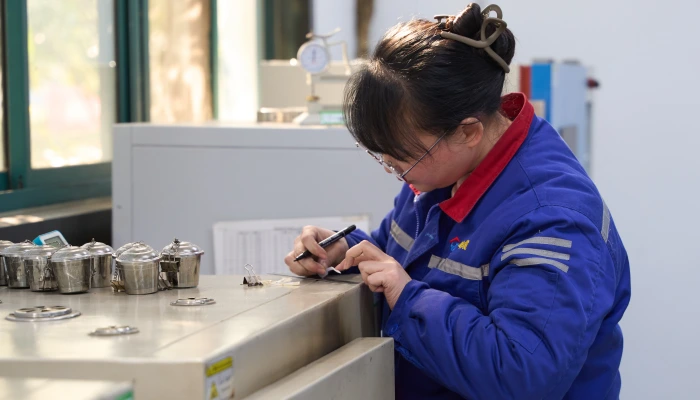
Testing & Quality Control
Testing and Certification
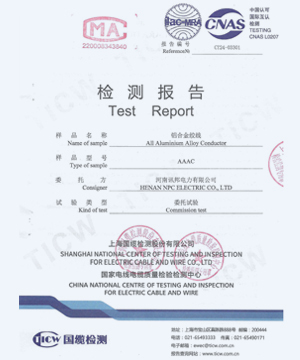
Bare Cable Test Report
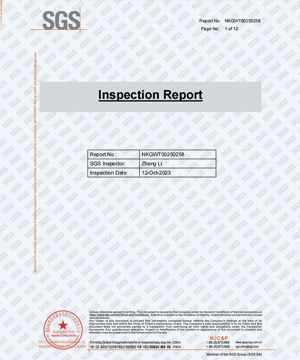
SGS Inspection Report

Certificate of Acceptance
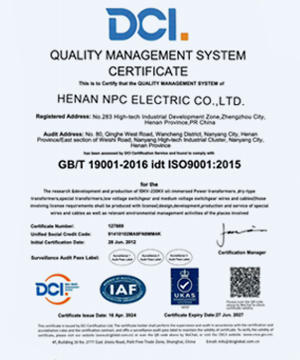
ISO Quality Certificate
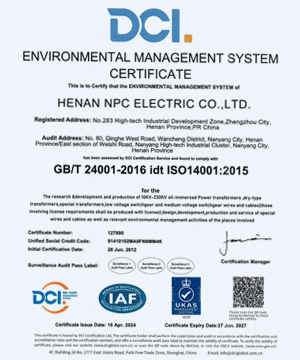
ISO Environmental Certificate

ISO Occupational Certificate
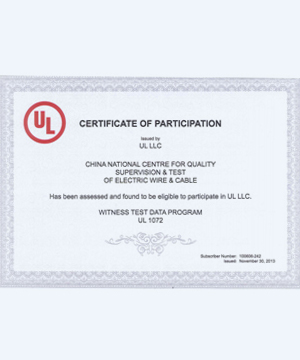
UL Laboratory Certificate
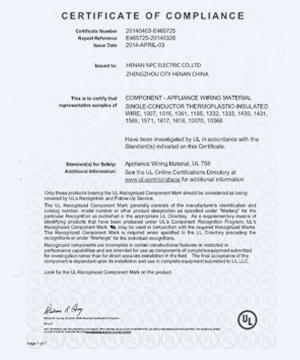
UL Product Certificate
Project Cases

Peru Solar PV Project
CompletedNPC Electric Delivers Medium-Voltage Cables for Peru Solar PV Project
Country:Peru
Model:HEPRZ1(AS) 1x630 mm² 19/33kV x 6km
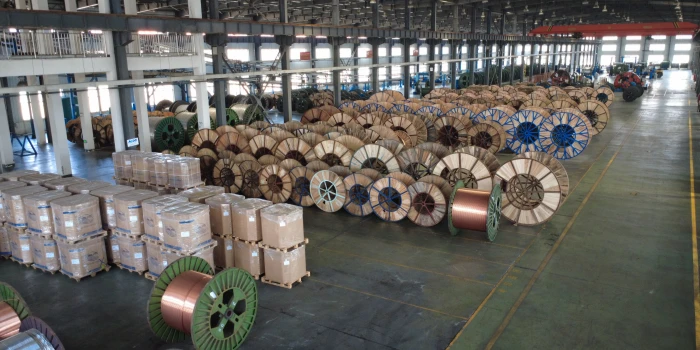
Chile El Project
CompletedReliable 19/33kV MV cables ensuring safe, stable, and efficient power transmission for critical projects.
Country:Chile
Model:19/33kV MV Power Cables x 5km
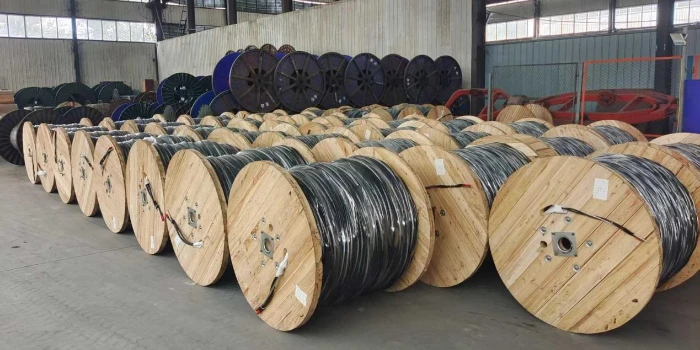
Dominican Edenorte Project
CompletedProvide outdoor power solutions for urban main road reconstruction projects to adapt to complex environments.
Country:Dominican
Model:NPC AAAC Cable & Triplex Cable x 10km
Technical Advantages
FAQ From Customers
-
What are the different types of mining cables?
There are several types of mining cables, each designed to meet specific electrical needs in mining environments:
1. Low Voltage Mining Cables: Used for power distribution within mining operations, typically up to 1 kV.
2. Medium Voltage Mining Cables: Designed for transmission of electricity at voltages between 1kV and 35kV to support large mining machinery and equipment.
3. High Voltage Mining Cables: Used in high voltage transmission for long-distance energy distribution, providing power to large-scale mining operations.
4. Flexible Mining Cables: These cables are designed to handle frequent movement and flexibility during mining operations, ensuring reliable performance in dynamic environments.
5. Instrumentation Cables: Used for signal transmission between control systems and equipment in the mining operation. -
What cable is used in mining?
Mining cables are specifically designed to handle the extreme conditions of underground and surface mining operations. These cables are typically made with high-quality copper or aluminum conductors, cross-linked polyethylene (XLPE) insulation, and robust sheathing materials such as PVC or thermoplastic rubbers to ensure they can withstand abrasion, chemical exposure, and mechanical stress. The most common types of cables used in mining include power cables, control cables, and instrumentation cables that ensure the safe operation of electrical systems, machinery, and communication devices in the mine. -
How are mining cables different from standard electrical cables?
Mining cables are built to meet the unique challenges of mining environments, including exposure to moisture, abrasion, extreme temperatures, and chemical exposure. Unlike standard electrical cables, mining cables have specialized insulation and protective sheaths that provide fire resistance, shock resistance, and mechanical protection. Additionally, mining cables often require certifications such as MSHA or IEC 60092 to ensure they meet safety standards for use in hazardous conditions. -
What materials are used in mining cables?
Mining cables are made from high-quality materials to ensure durability and safety in harsh environments. The conductors are usually made from copper or aluminum, offering excellent electrical conductivity. The insulation is typically made from cross-linked polyethylene (XLPE), which provides high thermal stability, electrical strength, and chemical resistance. The sheath is made from durable materials like PVC or PE, which protect the cable from abrasion, UV radiation, and moisture, ensuring that it can withstand extreme mining conditions. -
Why is flexibility important in mining cables?
Flexibility is crucial in mining cables because these cables often need to be installed in dynamic environments where they must bend or move as mining equipment and machinery are repositioned. Flexible mining cables are specifically designed to handle constant movement and maintain reliable performance in confined spaces or areas with high mechanical stress. These cables are ideal for use in drilling operations, mobile mining equipment, and areas where the cable may be subjected to frequent shifts in position.







